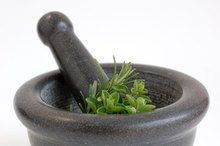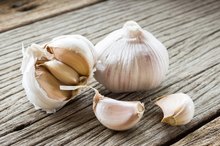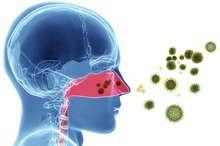What does fact checked mean?
At Healthfully, we strive to deliver objective content that is accurate and up-to-date. Our team periodically reviews articles in order to ensure content quality. The sources cited below consist of evidence from peer-reviewed journals, prominent medical organizations, academic associations, and government data.
- PubMed.gov: Effect of Azadirachta Indica (Neem) on the Growth Pattern of Dermatophytes
- PubMed.gov: Effect of Azadirachta Indica (Neem) on the Growth Pattern of Dermatophytes
The information contained on this site is for informational purposes only, and should not be used as a substitute for the advice of a professional health care provider. Please check with the appropriate physician regarding health questions and concerns. Although we strive to deliver accurate and up-to-date information, no guarantee to that effect is made.
Neem Oil for Nasal Fungus
Your nose and nasal passages are lined with a mucous membrane that traps dirt, mold, bacteria, fungi and pollen and prevents them from getting into your lungs. The mucous membrane also warms and moistens the air when you inhale. When bacteria or fungus get past the membrane, sinusitis and infections might result.Traditional treatments for nasal fungus include nose sprays or prescribed medications. However, neem oil may be an alternative. Always consult with your physician prior to using herbal remedies to treat any health condition.
If you are experiencing serious medical symptoms, seek emergency treatment immediately.
Identification
The neem tree is native to Burma and India and is capable of surviving severe drought conditions 2. According to Herbs2000, the plant's bark has been used traditionally to treat hemorrhoids. When steeped into a tea, neem leaves are thought to treat peptic ulcers and intestinal worms. In addition, the juice from the leaves may be helpful for eczema, wounds and boils.
- The neem tree is native to Burma and India and is capable of surviving severe drought conditions 2.
- In addition, the juice from the leaves may be helpful for eczema, wounds and boils.
Significance
How to Get Rid of a Scabby Nose
Learn More
India natives have used neem oil for thousands of years for an array of health conditions because it is thought to have antiviral, antibacterial and antifungal properties. In test-tube experiments, scientists in India found that extracts of neem leaves and seeds did disrupt the growth patterns of certain types of skin fungi, according to a study published in 2003 in the "Indian Journal of Medical Microbiology."
Symptoms
Symptoms of nasal fungus may include nasal congestion, headache and pain and tenderness in the nasal passages. According to Merck Manuals, fungi that lead to acute or chronic sinusitis may cause obstruction of the nose, reduced ability to smell, bad breath or halitosis and swelling of the affected sinus. Symptoms may worsen after five days and may continue up to 10 days.
Treatment
Neem Oil & Nail Fungus
Learn More
Over-the-counter medications are readily available to treat nasal fungus. In more severe cases, surgery may be necessary. However, using neem oil as an alternative treatment may aid in relieving pain and pressure from inflamed sinuses. When using pure neem oil to treat nasal fungus or sinusitis, put one to two drops in each nostril twice daily. In addition, drinking plenty of water will help you stay hydrated and aid in lubricating your mucous membranes.
- Over-the-counter medications are readily available to treat nasal fungus.
- However, using neem oil as an alternative treatment may aid in relieving pain and pressure from inflamed sinuses.
Warning
Women who are pregnant or breastfeeding should avoid using neem oil. In addition, using neem oil with other medications may have negative side effects 2. Before using neem oil or any herbal remedy to treat skin or health conditions, consult with your physician.
Related Articles
References
- Herbs 2000: Neem
- PubMed.gov: Effect of Azadirachta Indica (Neem) on the Growth Pattern of Dermatophytes
- Jalaluddin M, Rajasekaran UB, Paul S, Dhanya RS, Sudeep CB, Adarsh VJ. Comparative Evaluation of Neem Mouthwash on Plaque and Gingivitis: A Double-blind Crossover Study. J Contemp Dent Pract. 2017;18(7):567-571. doi:10.5005/jp-journals-10024-2085
- Pai MR, Acharya LD, Udupa N. Evaluation of antiplaque activity of Azadirachta indica leaf extract gel--a 6-week clinical study. J Ethnopharmacol. 2004;90(1):99-103. doi:10.1016/j.jep.2003.09.035
- Almas K. The antimicrobial effects of extracts of Azadirachta indica (Neem) and Salvadora persica (Arak) chewing sticks. Indian J Dent Res. 1999;10(1):23-6. doi:10865390
- Maity P, Biswas K, Chattopadhyay I, Banerjee RK, Bandyopadhyay U. The use of neem for controlling gastric hyperacidity and ulcer. Phytother Res. 2009;23(6):747-55. doi:10.1002/ptr.2721
- Paul R, Prasad M, Sah NK. Anticancer biology of Azadirachta indica L (neem): a mini review. Cancer Biol Ther. 2011;12(6):467-76. doi:10.4161/cbt.12.6.16850
- Abiy E, Gebre-michael T, Balkew M, Medhin G. Repellent efficacy of DEET, MyggA, neem (Azedirachta indica) oil and chinaberry (Melia azedarach) oil against Anopheles arabiensis, the principal malaria vector in Ethiopia. Malar J. 2015;14:187. doi:10.1186/s12936-015-0705-4
Writer Bio
Michelle Lawson began her professional writing career in 2010, with her work appearing on various websites. She emphasizes alternative approaches to health-related issues. She is certified as a Sports Nutritionist by the International Fitness Association. Lawson graduated from ATI College of Health with honors, earning her associate degree in medical assisting.








